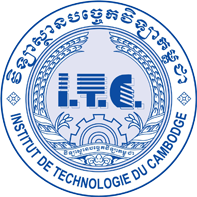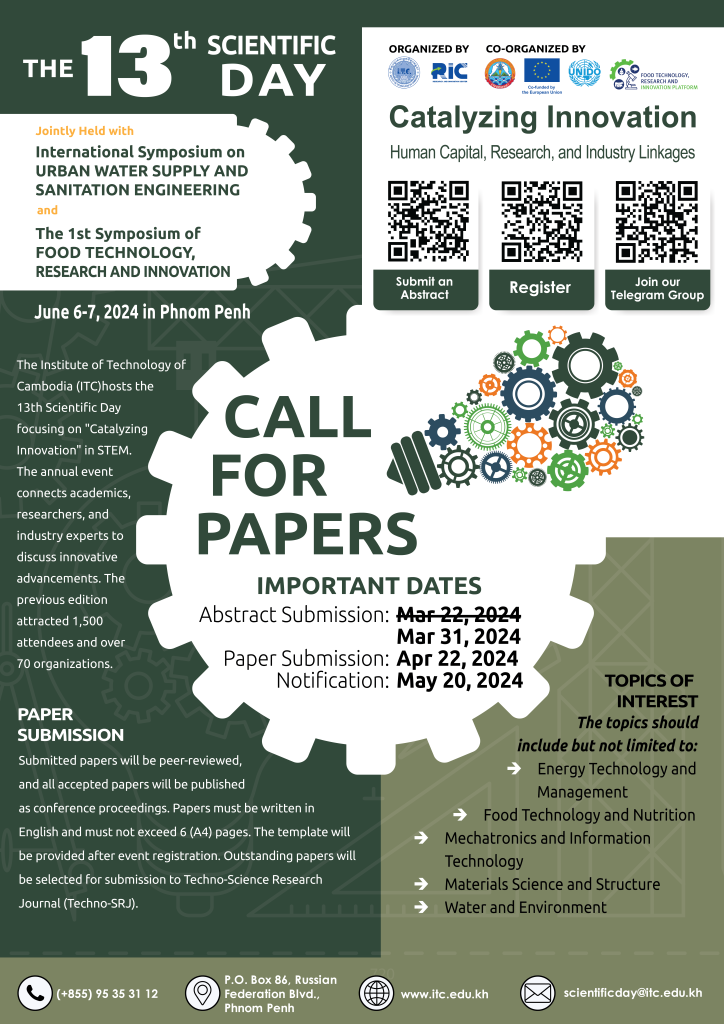The activity of the Water Oriented Living Lab. at ITC through the InowAsia project
This research activity is carried out by the research team at the Coastal and Wetland Environment Research Laboratory (CWE) which is used for Water Oriented Living Lab. (WOLL). WOLL is formed under the project InowAsia: Development of innovative multilevel formation programs for the new water leading professionals in South East Asia, which is a project of Erasmus+ under action “Capacity Building for Higher Education”, co-funded by Erasmus+ Programme of the European Union. The research team of CWE consists of
1. Dr. PEN Sytharith, Lecturer-researcher from ITC
2. Dr. DOUNG Ratha, Lecturer-researcher from ITC
3. Dr. Sylvan MASSUEL, Senior researcher from IRD, G-eau lab.
4. Dr. EANG Khyeam, Lecturer-researcher from ITC
5. Dr. CHHUON Kong, Lecturer-researcher from ITC
6. Mr. LUN Sambo, Lecturer-researcher from ITC
Hydrogeochemical Evolution of Groundwater in the Coastal Area of Cambodia
This research is in support of the 4C-Water project “Water Evolution and Vulnerability Under Global Changes in Coastal Catchments of Cambodia” co-funded by JEAI program of IRD.
Groundwater is typically regarded as more reliable and accessible than surface water in Cambodia. As Sihanoukville is undergoing tremendous urbanization, it is estimated to reach water scarcity in this region. Thus, the aim of this study is to investigate groundwater flow, aquifer layers, and their interaction with surface water in order to provide support for the estimation of water availability in this area. The boundary of this study is focused only on the coastal area, which is in the southern part of Sihanoukville, Cambodia. The data input of this study was recorded for three years from 2020 – 2022.
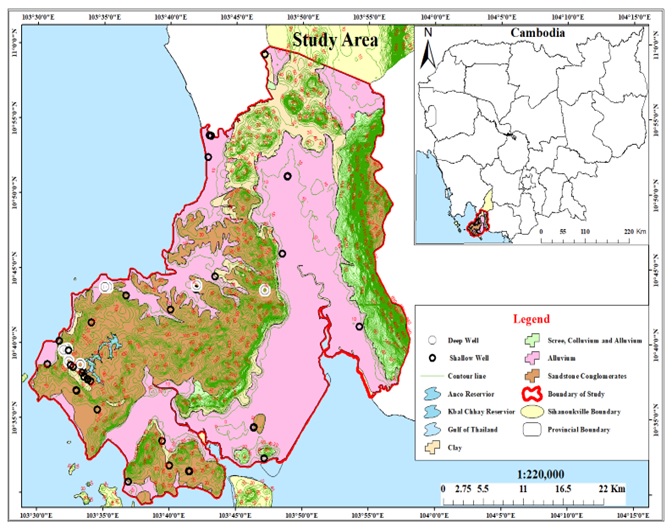
Site Description:
- Lies between latitudes 10ᵒ 30’ 0” N to 11ᵒ 0’ 0” N and longitudes 103ᵒ 30’ 0” E to 104ᵒ 0’ 0” E, the total area of 1546 km2
- Well depth varies from 1.71 to 200 m
- Groundwater samples collected in 2020, 2021, and 2022 were 41, 42, and 43, respectively
- Geology: sandstone and claystone with laterite layers at certain parts of Sihanoukville and Kbal Chhay region
- Altitude ranges between 3 to 860 masl
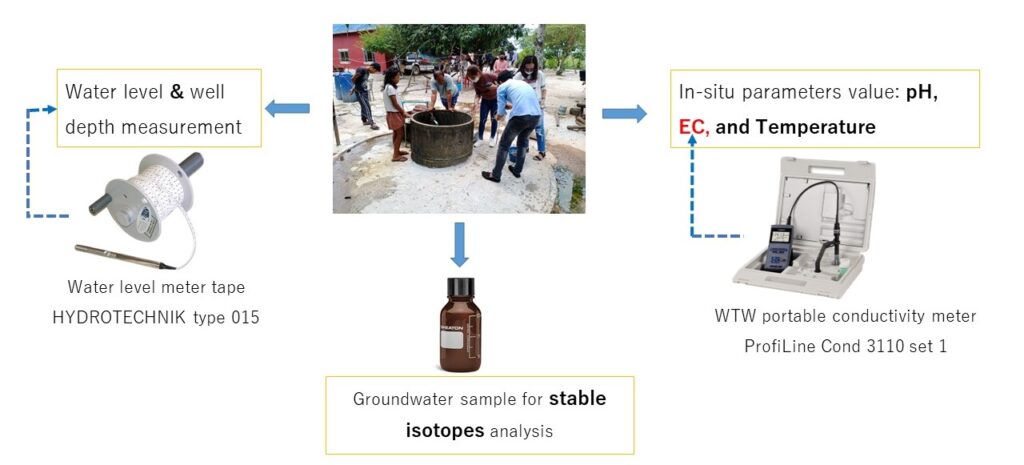
The present study has proved that the application of hydraulic head in conjunction with the isotopic composition of water under supplementary electrical conductivity enables us to constrain the groundwater flow path, groundwater interaction between aquifers and with surface water, as well as propose the sources of groundwater pollution in the specific area of the coastal region of Sihanoukville. The study found that the hydraulic head varies between 0.5 and 104.6 masl in which groundwater flows toward the sea. In addition, the isotopic compositions of the groundwater are in the range of -7.37 to -3.86 for δ18O, and -47.0 to -23.1 for δ2H. The study found that a few areas located quite near the shoreline with low hydraulic head are suspected to be intruded by seawater. In addition, it was found that the investigated deep wells are all types of sandstone aquifers which are separated from shallow wells by at least one confined layer (aquitard), suggesting that there are at least two types of aquifers (confined and unconfined aquifers) in the study area. In addition, shallow and deep wells with the same geological formation are found to be connected (vertical flow). The evidence from geological formations, hydraulic heads, and stable isotopes supplemented by water electrical conductivity indicates that there is an interaction between the groundwater and surface water in which groundwater feeds the stream.
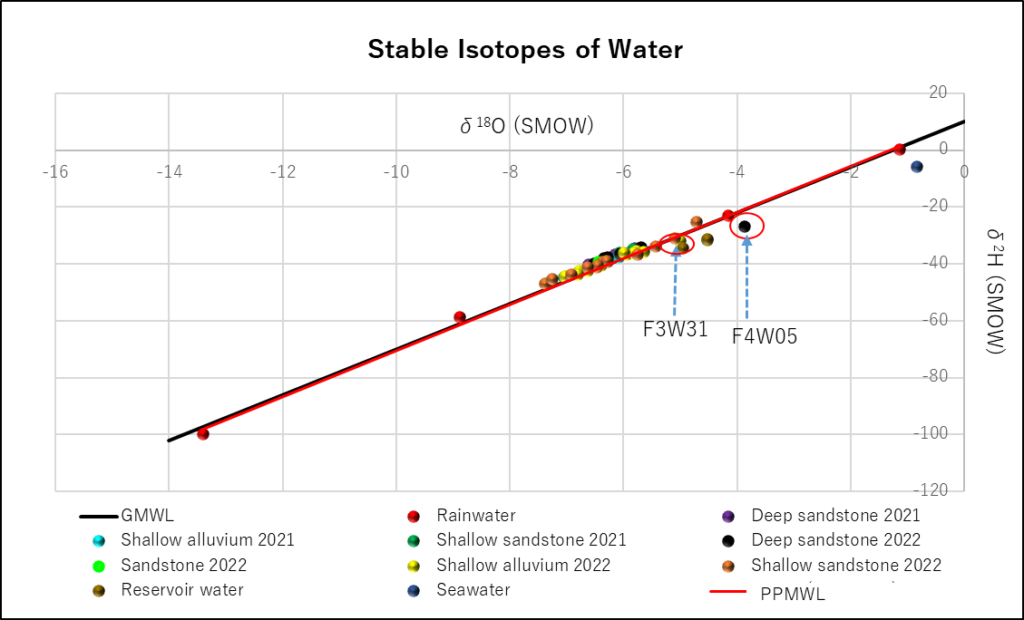
Stable Isotopes:
o The isotopic values of groundwater samples vary in range -7.37 ‰ – -3.86 ‰ for δ18O, and -47.0 ‰ – -23.1 ‰ for δ2H
o No significant evaporation in most groundwater samples.
–> isolated-from-surface water processes
o Two groundwater samples (F3W31 and F4W05) are below the line
–> possibility of the mixing with seawater or there is an interaction with surface water

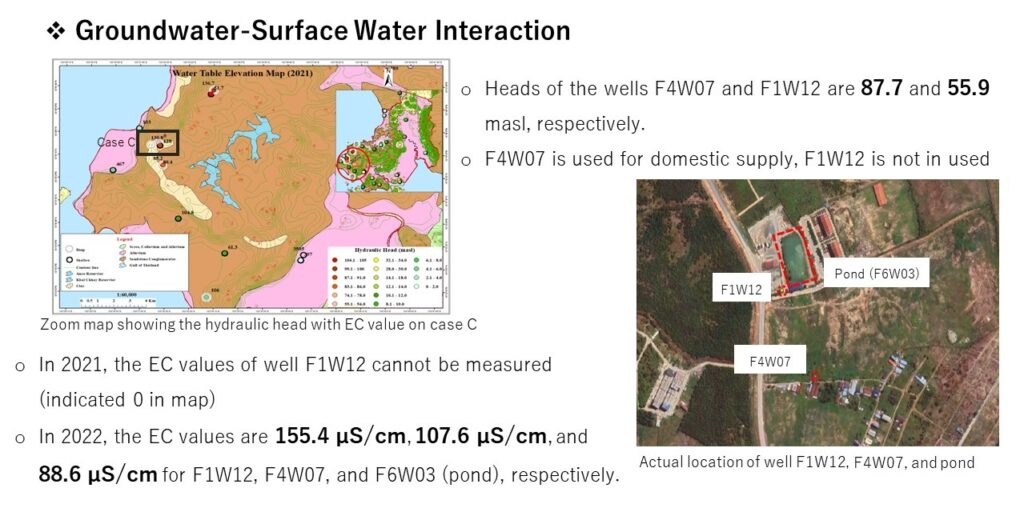
Finally, the data obtained from this study can be used as input for further study on the hydrogeological conceptual model of the aquifer. Additionally, it also provides geological information on the existing wells, which will contribute significantly to water resource management tools such as long-term aquifer monitoring networks. The findings of this study play a key role in groundwater quality evaluation as they provide the basic concept of groundwater flow and its interaction, which helps to judge the guilty party that affects the groundwater quality in the study area.
Coastal and Wetland Environment Research Laboratory (CWE) of ITC
Water Oriented Living Lab. under the project InowAsia: Development of innnovative multilevel formation programs for the new water leading professionals in South East Asia

